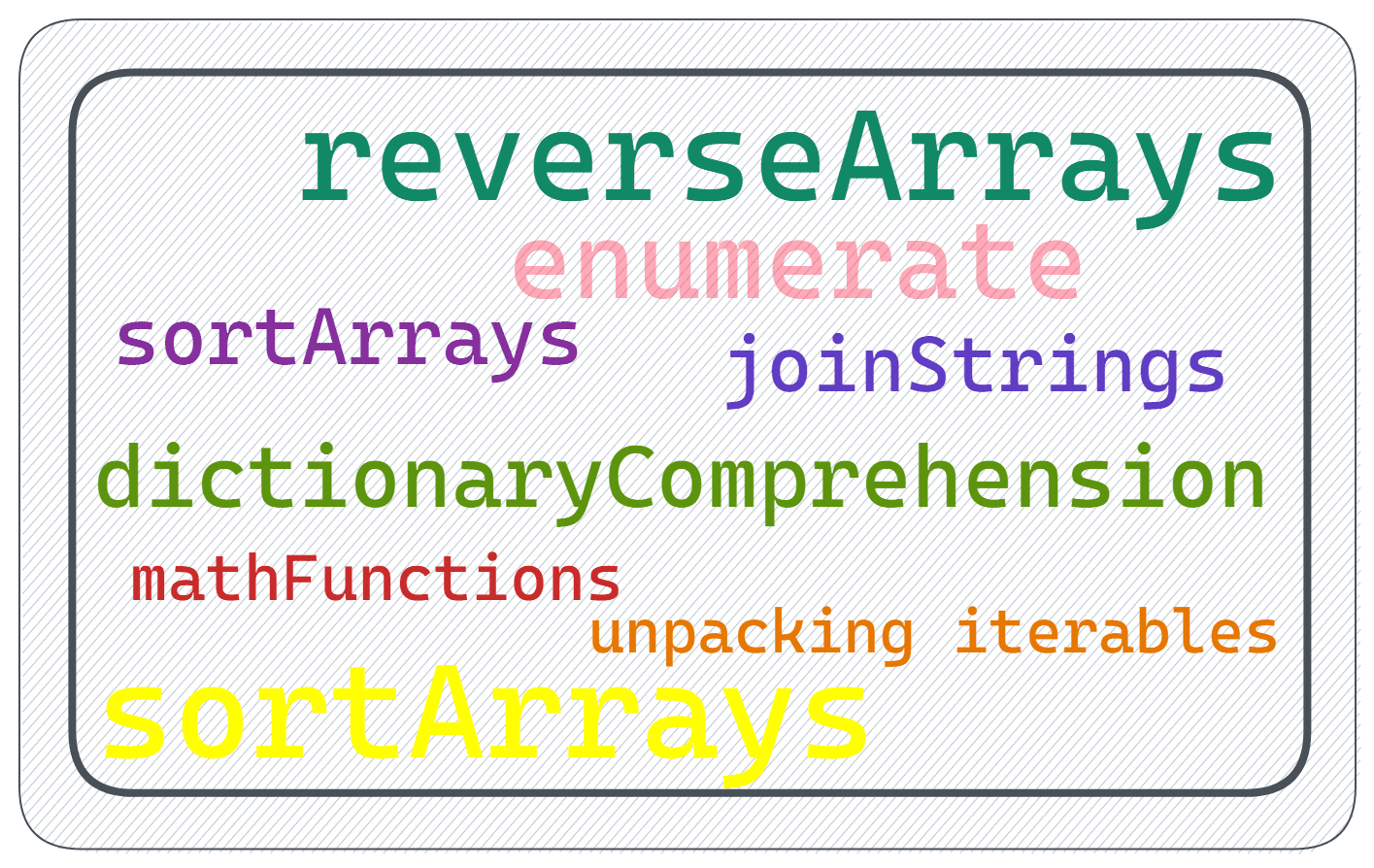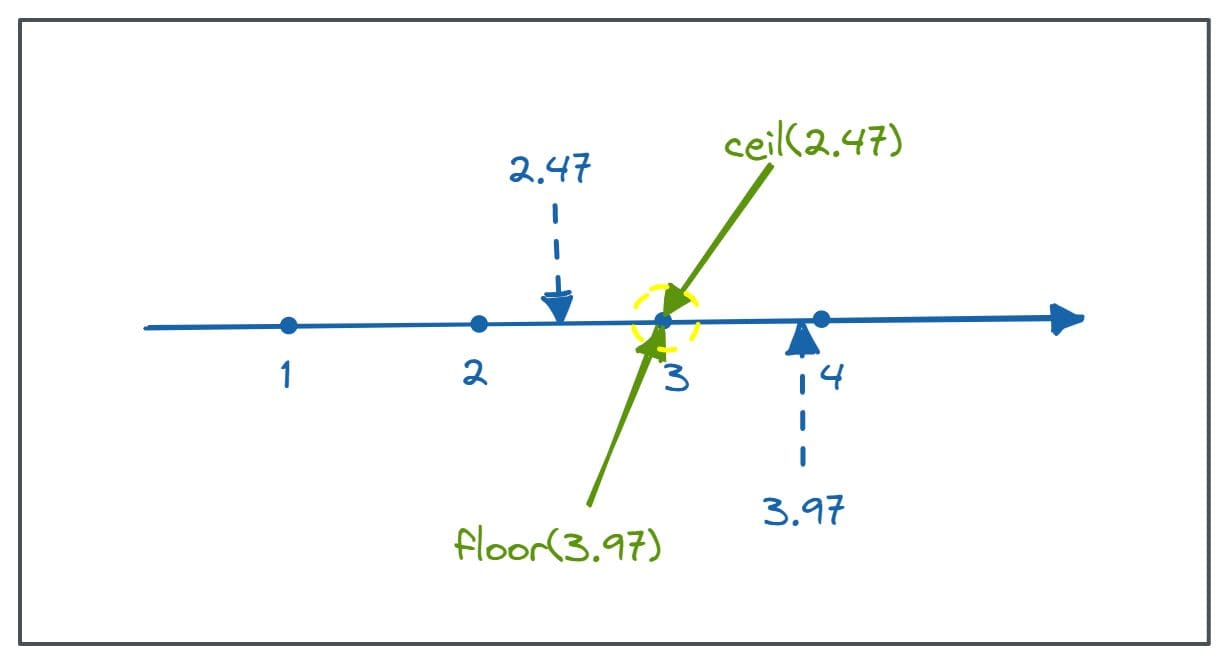7 Must-Know Python Tips for Coding Interviews
Preparing for your next Python coding interview? Here’s a list of useful tips that’ll come in handy and help you write Pythonic code.

Image by Author
Almost all interviews for data science roles include up to two rounds of coding to test a candidate’s problem solving skills. So even if you have an impressive project portfolio, you’ll have to clear the initial coding interview rounds to progress further.
Choosing a language like Python—to tackle coding interviews—can be very helpful as it's much simpler to learn and use than languages like C++ and Java. In this guide, we'll go over useful Python tips for coding interviews.
We’ll cover reversing and sorting arrays, customizing array sorts, list and dictionary comprehensions, unpacking iterables, and more. Let’s dive right in!
1. Reverse an Array in Place
In any coding interview, you’ll have questions on arrays. In Python, lists provide the same functionality as arrays. You can do the following:
- Look up the element at a particular index in constant time.
- Append to the end of the list and remove items from the end of the list in constant time.
- Insert an element at a particular index in O(n) time.
When you need to reverse a list in place, without creating a new list, you can call the reverse() method on the list. Here, we initialize the nums list and call the reverse() method on it.
nums = [90,23,19,45,33,54]
nums.reverse()
print(nums)
We see that the original list has been reversed:
Output >> [54, 33, 45, 19, 23, 90]
2. Sort Arrays and Customize Sorts
Another common array operation is sorting. When you need to sort a list in place, you can call the sort() method on the list object.
Here, nums is also a list of numbers, and calling the sort() method on nums sorts the list in place in ascending order:
nums = [23,67,12,78,94,113,47]
nums.sort()
print(nums)
Output >> [12, 23, 47, 67, 78, 94, 113]
As seen, the sort() method sorts the list in ascending order by default.
To sort the list in descending order, you can set reverse to True in the sort() method call:
nums.sort(reverse=True)
print(nums)
Output >> [113, 94, 78, 67, 47, 23, 12]
Note: For a list of strings (such as ["plums","cherries","grapes"]) the default sorting is in alphabetical order. Setting reverse = True sorts the list of strings in reverse alphabetical order.
Customize Sort with Lambda
Sometimes, you need more customized sorting beyond the trivial ascending and descending order sorts. You can customize the list sort() by setting the key parameter to a callable.
As an example, let’s sort the nums list based on the remainder obtained on dividing by 7.
nums.sort(key=lambda num:num%7)
print(nums)
Output >> [113, 78, 23, 94, 67, 47, 12]
To check if the output is correct, let’s create a list of remainders rem_list:
rem_list = [num%7 for num in nums]
print(rem_list)
Output >> [1, 1, 2, 3, 4, 5, 5]
We see that 1 and 5 occur twice in rem_list. Let’s parse what this means:
- Both 13 and 78 leave a remainder of one when divided by 7. But 13 appears before 78 in the sorted list because it appears before 78 in the original
numslist. - Similarly, both 47%7 and 12%7 evaluate to 5. And 47 appears before 12 in the sorted list because it appears before 12 in the original list, too.
- Therefore,
sort()method performs a stable sort where the order of the elements in the original list is preserved—if two or more elements are equal under a given sorting criterion. In this case, the criterion isnum%7.
You can also customize the sorting of lists of strings. Here, we sort the list str_list based on the number of occurrences of 'p':
str_list = ["puppet","trumpet","carpet","reset"]
str_list.sort(key=lambda x:x.count('p'))
print(str_list)
Output >> ['reset', 'trumpet', 'carpet', 'puppet']
3. List and Dictionary Comprehensions
Comprehensions are one of the powerful features of Python that let you write idiomatic code. They let you create new iterables from existing ones and can often be a concise alternative to for loops.
List Comprehension Example
Suppose we have the nums list. We’d now like to get the list of all numbers in nums that are divisible by 3. To do so, we can use list comprehension expressions of the form: [output for item in iterable if condition].
Here, we filter the nums based on the condition num%3==0 to get the div_by_3 list:
nums = [15,12,90,27,10,34,26,77]
div_by_3 = [num for num in nums if num%3==0]
print(div_by_3)
Output >> [15, 12, 90, 27]
Dictionary Comprehension Examples
Dictionary comprehension is helpful when you need to create a new dictionary from existing iterables instead of using for loops.
These expressions are generally of the form: {key:value for key in some_iterable}. Meaning we can access the keys and create the values on the go (from the keys)!
Suppose we want to create a Python dictionary containing the numbers 1 to 10 as the keys and the squares of those numbers as the values. We can do it using dictionary comprehension like so:
squares_dict = {i:i**2 for i in range(1,11)}
print(squares_dict)
We see that we have the numbers and the squares of the numbers as key-value pairs:
Output >>
{1: 1, 2: 4, 3: 9, 4: 16, 5: 25, 6: 36, 7: 49, 8: 64, 9: 81, 10: 100}
Here’s another example. From the strings list, we construct the str_len dictionary, where keys are the strings and values are the length of these strings:
strings = ["hello","coding","blue","work"]
str_len = {string:len(string) for string in strings}
print(str_len)
Output >> {'hello': 5, 'coding': 6, 'blue': 4, 'work': 4}
4. Unpacking Iterables
In Python, you can unpack iterables into one or more variables depending on how you’d like to use them. This is especially helpful when you need to use only a subset of the elements for further processing.
Let’s create a list list1:
list1 = [i*2 for i in range(4)]
print(list1)
Output >> [0, 2, 4, 6]
If we want to use all the four elements in list1, we simply assign it to four different variables as shown:
num1, num2, num3, num4 = list1
print(num1)
Output >> 0
print(num2)
Output >> 2
print(num3)
Output >> 4
print(num4)
Output >> 6
If you want only the first elements in the list in a variable, say, num1 and the remaining elements (sublist) in another variable, say, num2, you can use * before the variable name so it’ll capture the remaining elements in list1:
num1, *num2 = list1
print(num1)
Output >> 0
print(num2)
Output >> [2, 4, 6]
Similarly, if you want the first and the last elements in the list, you can unpack as shown below. The elements 2 and 4 are subsumed in the variable num2:
num1, *num2, num3 = list1
print(num1)
Output >> 0
print(num2)
Output >> [2, 4]
print(num3)
Output >> 6
5. Join a List of Strings on a Separator
Suppose you have a list of strings and the task is to join them into a single string using a separator.
You can use the join() string method like so: separator.join(list) will join the elements in the list using the separator.
Here are a few examples. Consider the fruits list shown:
fruits = ["apples","grapes","berries","oranges","melons"]
To join the strings in the fruits list using -- as the separator, specify '--' as the separator string:
print('--'.join(fruits))
Output >> 'apples--grapes--berries--oranges--melons'
To join the strings without any white space, use an empty string as the separator:
print(''.join(fruits))
Output >> 'applesgrapesberriesorangesmelons'
To join the strings using a single white space, specify ' ' as the separator:
print(' '.join(fruits))
Output >> 'apples grapes berries oranges melons'
6. Loop Using enumerate()
Let's use the previous fruits list:
fruits = ["apples","grapes","berries","oranges","melons"]
You can use the range function and list index to get the items and index simultaneously:
However, it’s convenient to use the enumerate() function. You can loop through both the index and the item at the index, simultaneously, using the enumerate() function:
for idx,fruit in enumerate(fruits):
print(f"At index {idx}: {fruit}")
We see that we get the indices 0 to 4 along with the elements are those indices:
Output >>
At index 0: apples
At index 1: grapes
At index 2: berries
At index 3: oranges
At index 4: melons
By default, the index starts at zero. Sometimes you may want to start at a non-zero index. To do this, you can specify the start index as the second position argument as the second position argument in the enumerate() function call:
for idx,fruit in enumerate(fruits,1):
print(f"At index {idx}: {fruit}")
Now the index starts at 1 index instead of zero:
Output >>
At index 1: apples
At index 2: grapes
At index 3: berries
At index 4: oranges
At index 5: melons
Because enumerate() allows you to loop through iterables, you can use it inside list and dictionary comprehensions.
For example, you can store the index and the items as keys and values in the dictionary using the enumerate() function in the dictionary comprehension expression:
idx_dict = {idx:fruit for idx,fruit in enumerate(fruits)}
print(idx_dict)
Output >> {0: 'apples', 1: 'grapes', 2: 'berries', 3: 'oranges', 4: 'melons'}
7. Useful Math Functions to Know
Python’s built-in math module comes with out-of-the-box support for common mathematical operations. Here are some functions that will come in handy:
math.ceil() and math.floor()
You’ll often have to round down and round up numbers to the nearest integers; the floor() and ceil() functions in the built-in math module help you do this:
- The
floor()function rounds down a given number to the greatest integer that is less than or equal to the given number. and - The
ceil()function rounds up the given number to the smallest integer that is greater than or equal to the given number.
Here’s an example:

Image by Author
As 3 is the smallest integer greater than 2.47, ceil(2.47) gives 3:
import math
num1 = 2.47
print(math.ceil(num1))
Output >> 3
And as 3 is the greatest integer less than 3.97 so floor(3.97) also gives 3:
num2 = 3.97
print(math.floor(num2))
Output >> 3
math.sqrt() and List Comprehension
To get the square root of a number, you can use the sqrt() function from the math module. You can use it in conjunction with comprehensions to extend functionality.
Here, we use the sqrt() function in a list comprehension expression to generate the s
sqrt_nums = [math.sqrt(num) for num in range(1,11)]
print(sqrt_nums)
Output >> [1.0, 1.4142135623730951, 1.7320508075688772, 2.0, 2.23606797749979, 2.449489742783178, 2.6457513110645907, 2.8284271247461903, 3.0, 3.1622776601683795]
For a more easily readable output, let’s round the numbers to two decimal places using the built-in round() function:
sqrt_nums = [round(math.sqrt(num),2) for num in range(1,11)]
print(sqrt_nums)
Output >> [1.0, 1.41, 1.73, 2.0, 2.24, 2.45, 2.65, 2.83, 3.0, 3.16]
Wrapping Up
And that's a wrap! I hope you found a few useful tips to add to your Python toolbox.
If you're looking to learn and practice Python, and are interested in integrating ChatGPT into your learning workflow, check out this guide on how to use ChatGPT as a Python Programming Assistant.
Bala Priya C is a technical writer who enjoys creating long-form content. Her areas of interest include math, programming, and data science. She shares her learning with the developer community by authoring tutorials, how-to guides, and more.
